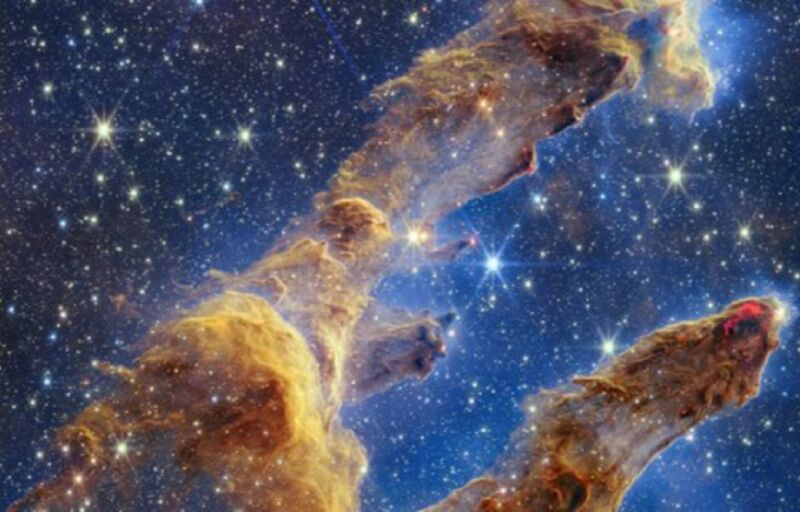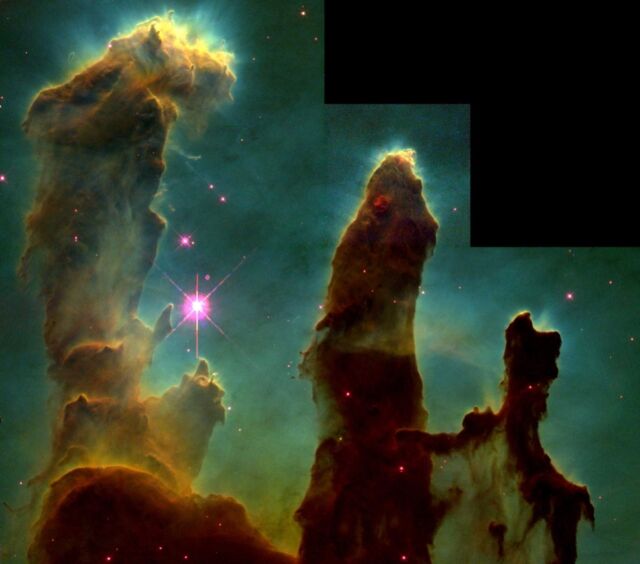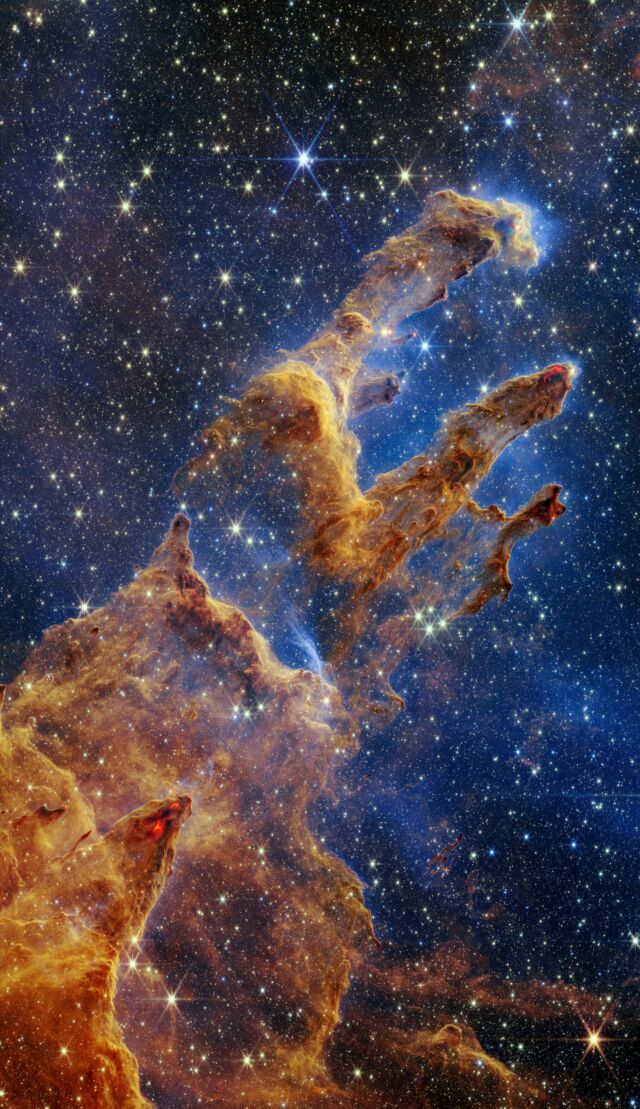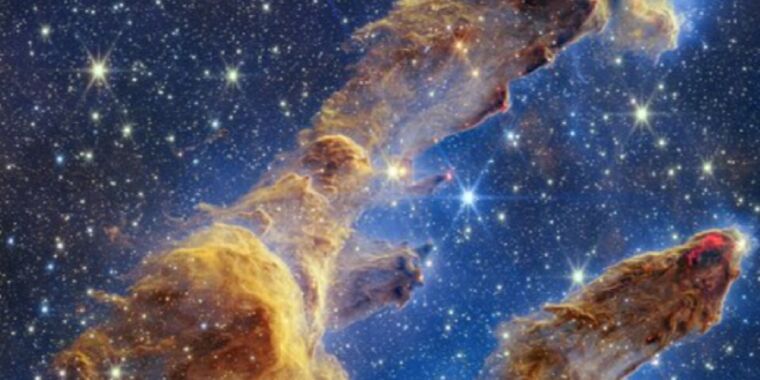
NASA’s James Webb Space Telescope is the gift that keeps on giving, releasing one breathtaking image after another since the summer. NASA today released a stunning near-infrared camera image of the iconic “Pillars of Creation” in the Eagle Nebula, some 7,000 light-years away.
“I’ve been studying the Eagle Nebula since the mid-1990s, trying to see ‘within’ the light-year-long pillars that Hubble showed, looking for young stars within them,” Mark McCaughrean of the European Space Agency told BBC News. “I always knew that when James Webb took pictures of them, they would be stunning. And they are.”
The James Webb Space Telescope was launched in December 2021 and promptly began capturing images. First, there was the deep field image of the universe released in July. This was followed by images of exoplanet atmospheres, the Southern Ring Nebula, a cluster of interacting galaxies called Stephan’s Quintet, and the Carina Nebula, a star-forming region about 7,600 light-years away. These images reportedly brought astronomers to tears.
In August, we received beautiful images of Jupiter, including the auroras at both poles resulting from Jupiter’s powerful magnetic field, as well as its thin rings and two of the gas giant’s small moons. This was followed a month later by a mosaic image showing a panorama of star formation spanning a staggering 340 light-years in the Tarantula Nebula — so named for its long, dusty filaments. This stellar nursery is located in the Large Magellanic Cloud, one of the closest galaxies to our own Milky Way at a distance of 160,000 light-years.
We were also treated to spectacular images of Neptune and its rings, which have not been seen directly since Voyager 2 flew past the planet in 1989. It is difficult to observe these rings from afar because they are close to the planet and obscured by Neptune’s brightness. But the Webb telescope found prominent rings as well as dust bands.

NASA/Public Domain
And now we have the Pillars of Creation – arguably the most famous image captured in 1995 by Webb’s predecessor, the Hubble Space Telescope. (Chances are someone you know has a T-shirt or coffee mug featuring that image — that’s how famous it is.) The pillars are basically cool molecular hydrogen and dust slowly eroded by the UV light from nearby hot stars. The famous statue got its name because buried under all that gas and dust new stars are born.
In particular, the new image from the Webb Space Telescope shows those protostars — bright red spheres, occasionally with sharp diffraction peaks. See:

There are also clear lines resembling lava along the edges of the pillars – excrement from the stars that are forming and are only a few hundred thousand years old. However, no distant galaxies are visible in this latest image, as the interstellar medium blocks Webb’s view. Still, astronomers are excited because the data behind the image is likely to lead to improved models of star formation.

